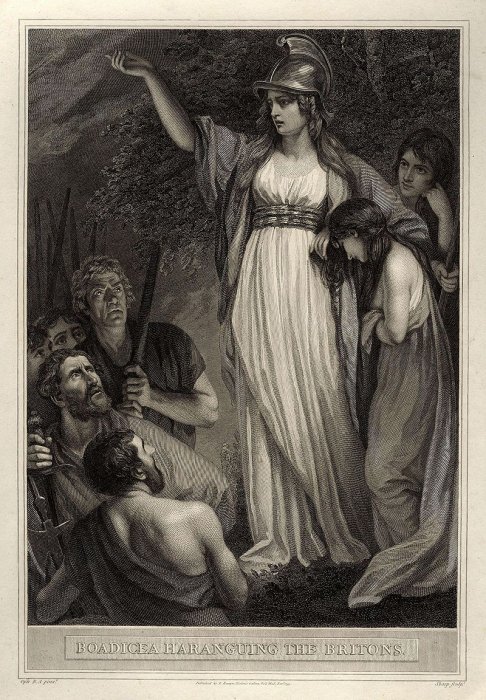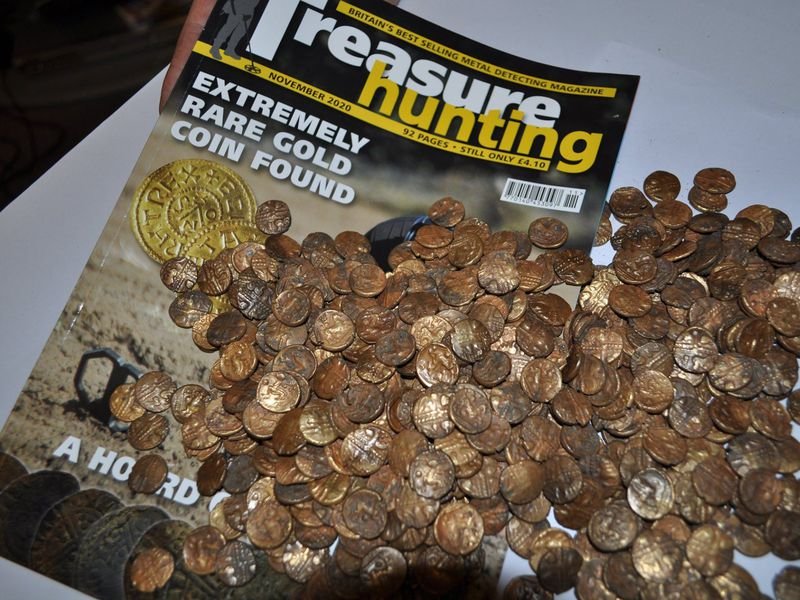Jan Bartek – AncientPages.com – Many treasure hunters spend years searching for something valuable, but sometimes the most precious ancient objects can be discovered by those who don’t look for them at all.
This is exactly what happened to a man in Britain who was out doing some birdwatching. He did certainly see the birds, but he also accidentally stumbled upon a million-dollar cache of ancient Celtic coins.

Queen Boudica. Credit: Public Domain
The amazing discovery has changed his life, and it’s an experience the anonymous birdwatcher will never forget.
“The gold medallions — almost mistaken for an old machinery part — date back over 2,000 years to the age when the fierce Celtic queen Boudicca was at war with Rome, according to appraisers, who estimate the prize to be worth £845,000, or about $1,144,000,” the New York Post reports.
t’s a “life-changing” sum for the lucky finder, reportedly in his 50s, who chose to remain anonymous in a recent interview with Treasure Hunting magazine.
“That evening I was doing a bit of bird-watching,” he said. “After watching a dogfight between a buzzard and a pair of magpies, I stared down and spotted something lying in a bit of the deep ploughed soil which ran around the edge of the field.”
He nearly pᴀssed it, thinking the metal chip was an old washer. Then he “rubbed it and felt its thickness.”
“I saw the glint of gold and realized it was a beautiful Celtic gold stater, which made me sit down in sheer shock,” he said. “I then spotted the second coin two feet away and rushed home to get my [metal detector].” It gave him a “really strong” signal that more was just below the surface.

The coins are worth an estimated £845,000, or roughly $1,150,000 USD. Credit: Treasure Hunting magazine
After about 18 inches of digging, he unearthed a copper bangle — likely the handle of a pitcher of gold coins. “Gently,” he lifted the vessel and out came a “cascade” of gold — “a vision which will remain with me for the rest of my life,” he recalled. “I had to sit down to get my breath back. I had only come out for a walk and found a Celtic hoard.”
According to Treasure Hunting’s editor Julian Evans-Hart, “the coins form a substantial if not enormous contribution to our academic numismatic knowledge and will undoubtedly be subject to much ᴀssessment over the coming year.”
What is truly special about this particular ancient treasure is that it’s believed that the ancient Celtic coins may form a deposit as a ‘war chest’ for Queen Boudicca’s eastern campaigns.
“In 61 AD, Boudicca raised the Iceni and the neighboring Trinivantes tribe in revolt against Roman rule.
She decided to destroy the invaders and she chose Londinium as a key target for her uprising. On her way to Londinium (modern London), Boudica and her army destroyed Camulodunum (modern Colchester), at that time a settlement for discharged Roman soldiers and site of a temple to the former Emperor Claudius.
See also: Where Is The Grave Of Queen Boudica?
Boudicca’s treatment of her enemies was brutal, and she must have given the Romans a terrific scare. One legion was so terrified that they refused to move against her.” 1
Queen Boudica was eventually defeated but she is still remembered as the Iceni’s Queen who revolted against the Roman rule.
Written by Jan Bartek – AncientPages.com Staff Writer
Expand for references
- A. Sutherland – The Iceni’s Queen Boudicca Who Revolted Against Roman Rule, AncientPages.com





